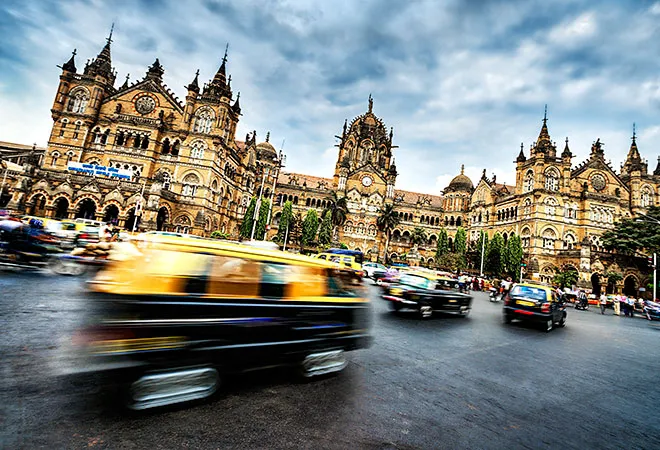India is not alone in suffering an economic slowdown. From Japan to Thailand, the economic scene is not rosy and governments of many neighbouring countries to the East are trying to revive growth through stimulus packages. The biggest casualty is the manufacturing sector which has been facing a slowdown in erstwhile four East Asian Tigers — Hong Kong, Singapore, Taiwan and Korea. This is because of the trade war between the US and China and the latest move by President Trump against China with his threat of imposing 10 per cent duty on $300 billion worth of additional Chinese imports. China is also retaliating and letting its currency slip downwards to a record low of 7 Renminbi per dollar. This will make Chinese exports more competitive vis-a vis others including India. But what the trade face off has done is to break the various supply chains in East Asia which has led to their current slowdown. India’s economic slowdown is significant specially when the high rate of growth of last year has been scaled down to 6.9 per cent this year by the Reserve Bank of India.
Reducing interest rates has been followed even by the US Federal Reserve recently to give an impetus to investment to a near full employment US economy. The Bank of Japan has no more scope for reducing rates as it near zero. Hence RBI’s latest move of reducing repo rate (the rate at which RBI lends to commercial banks in need of funds) by 35 basis points (one basis point is 0.01 per cent) to 5.4 per cent, to a 9-year low, is not a surprising move. Both New Zealand and Thailand also reduced interest rates on the same day — New Zealand by 50 basis points and Thailand by 25 basis points. Hopefully RBI’s move will translate into lower lending rate and banks will start lending more to potential investors and the non banking financial companies (NBFCs) or the shadow banking sector. This move of easier lending will benefit the MSME sector which is responsible for 45 per cent of our exports and employs 120 million people. The MSMEs are facing a crisis despite the many sops the government has given in recent months.
The RBI’s latest move of reducing repo rate to 5.4 per cent, to a 9-year low, is not a surprising move.
While it is true that the prolonged economic crisis is eroding the confidence of the people and the latest RBI Consumer Confidence survey (July 2019) clearly shows that consumers are losing confidence and are fearing job losses and price rise, the crisis can be brought under control with timely steps by the government. By reducing repo rates alone, it cannot be hoped that full revival will take place any time soon. This is because giving an economic stimulus through monetary policy is not enough as too much is hope is being pinned on banks’ effective intermediation.
The governor of RBI is keen to revive consumer demand and kick start investment. India’s gross fixed capital formation to GDP has remained significantly lower than most ASEAN and East Asian countries. It stood at 30.7 per cent of GDP at constant prices in 2018. Consumer demand is a very tricky quantity. People will start buying cars, scooters and consumer durables when they have confidence about their future. In the present scenario people seem to be worried about their jobs when news of downsizing and retrenchment are coming out daily. Their expenditure on daily survival is also not going down as a result of which the savings rate is falling.
The task before the government is to build the confidence in the average consumer by taking some important measures that will show that employment is growing and inflation remains low. There has to be a reduction in transportation costs which is eating into people’s incomes.
This it can do by investing in infrastructure which in any case we need badly. Immediately more jobs can be created and the economy will get a big shot in the arm and private investment will also grow as a result of supplying to government the equipment needed for infrastructure. The government can easily do so with the extra money it is likely to get from the RBI surplus reserves and foreign borrowings in the near future. Heavy investment in agriculture is also needed to make farmers earn a decent income after covering their costs. The agricultural marketing infrastructure needs upgrade and also the storage capacity needs to be enhanced. The fiscal deficit target has already been breached to 3.5 per cent of the GDP according to the Finance Ministry and hence increase in government expenditure is not going to be catastrophic.
People will start buying cars, scooters and consumer durables when they have confidence about their future. In the present scenario people seem to be worried about their jobs when news of downsizing and retrenchment are coming out daily.
Another urgent task before the government is to revive the export sector production because our exports are taking a beating from countries in the neighbourhood. Increasing competitiveness is difficult specially with such a small percentage of the labour force (5 per cent) being trained and skilled as compared to Southeast Asian countries like Korea (96 per cent), China (24 per cent) and Japan. Improvement in infrastructure specially in railway freight transport and better ports and airports will help in reducing transaction costs which is a big component in World Bank’s competitiveness ranking.
In the external sector, the government has to increase the confidence of the Foreign Portfolio Investors (FPI) who have been withdrawing from the Indian stock market in droves. According to Financial Times, they have withdrawn a net $5.5 billion in July. Reassuring them is the task ahead for the government as it has led to stock market turmoil in July, the worst in 17 years. Increasing the tax revenue kitty is also an aim of the government. But Taxing business is a delicate subject and instilling fear is the worst thing. A lot of introspection is needed in the government’s tax department and the enforcers of laws to meet the elevated target for dealing with foreign and equally important domestic investors. India is very dependent on domestic private investment and though Foreign direct Investment has been growing it is not increasing fast. A more enabling environment involving pollution control and provision of land more easily are important for attracting FDI. In all, it is an uphill task for the Modi government!
This commentary originally appeared in The Tribune.
The views expressed above belong to the author(s). ORF research and analyses now available on Telegram! Click here to access our curated content — blogs, longforms and interviews.




 PREV
PREV

